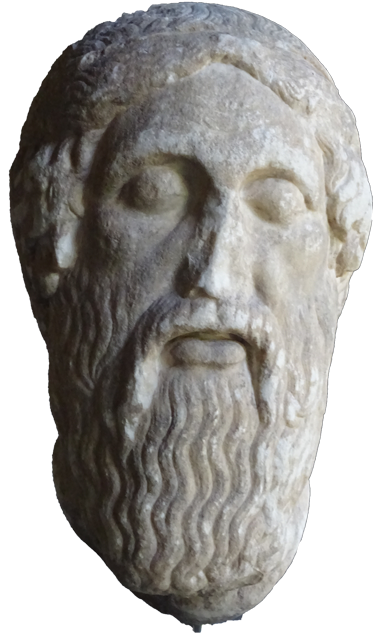Further Reading
Odysseus Unbound has an extensive bibliography with much useful further reading. Added to it should be the author’s own article:
Robert Bittlestone, “How Far was Eumaios' Pigfarm from Odysseus' Palace?,” Revue des études anciennes, Vol. 110, No. 2 (2008), 569-572.
The original Odysseus Unbound website had excerpts from many favourable book reviews from the popular press. (The website was replaced in 2017 with no reviews.) However, there were some reviews in academic journals that were not included. They have many informed and insightful things to say about the book. Here are a few I found on JSTOR.
Christina Haywood in Classics Ireland, Vol. 14 (2007), pp. 89-91.
Haywood is an archaeologist who has published books on the Ionian islands and on Cephalonia in particular. She acknowledges the author’s enthusiasm, but notes: “What is clearly missing is a good knowledge of the complexities of Homeric language, and the support of archaeology.” On the Homeric characterization of Ithaca as low-lying (Od. 9.25), she notes that scholars have found philological solutions to the Homeric wording, recently J. V. Luce, Celebrating Homer's landscapes: Troy and Ithaca revisited, Yale, 166-169. She believes Odysseus Unbound did not give “a fair hearing to the case of the modern Ithaca being the Homeric island.” She recommends to the general reader, among others, E. S. Sherratt, “Reading the texts: archaeology and the Homeric question,” Antiquity 64 (1990), 807-24.
G.L. Huxley in Hermathena, No. 182 (Summer 2007), pp. 165-169
Professor Huxley is also an experienced archaeologist, as well as a classicist and philologist. His erudite review identifies a number of “philological difficulties,” including the book’s interpretation of Ithaca being “furthest to sea towards dusk” (9.25-6) as meaning “towards the west.” He doubts the requirement for twin harbours on the island of Asteris. He raises questions about the route to Ithaca attributed to Telemachus. He throws light on what Strabo meant by the “isthmus” in Cephalonia. And on the internal topographical features of Homeric Ithaca, he writes: “Some of the identifications seem to be optimistic or made with an eye of faith.” He writes that Bittlestone “too hastily dismisses attempts to identify Thiaki with Homeric Ithaca. He proves neither that Homeric Ithaca was not Thiaki nor that Palike was Homeric Ithaca....”
Barbara Graziosi, in The Journal of Hellenic Studies, Vol. 128 (2008), pp. 178-180
Professor Graziosi also raises several interesting philological issues, including in the book’s appendix “A Philologist Reflects” which she describes as “not the best possible reading of the ancient texts.” She discusses several examples. Ultimately, however, she thinks philological issues may not be at the heart of the book. “There seem to be more pressing questions to be asked about Cambridge University Press's decision to publish a book that is about 550 pages too long; about the relationship between scholarship, the media, and privately funded research; about the shadow cast by Schliemann (whose personal style in recounting his discoveries comes close to B's description of himself as an amateur suddenly struck by a brilliant idea).“
There is one book that has devoted a fair amount of space to Odysseus Unbound:
Dimitris I. Paizis-Danias, Homer's Ithaca on Cephallenia?: Facts and fancies in the history of an idea (Greece: Ithacan Friends of Homer Association, 2006)

This book, written by a native of Ithaki, recounts and seeks to rebut many of the proposals that Homeric Ithaca was anywhere other than on the modern island of Ithaki (or Thiaki). The book has ten colour maps that very usefully illustrate the various theories. However, the author’s arguments are not always easy to understand, and sometimes have an air of exasperation, even irritation. Nevertheless, Robin Lane Fox described the book as “magisterial" in his Travelling Heroes, Penguin, 2009, p. 418, n. 20.
Available from the Ithacan Friends of Homer Association.
In 2011 a group of geologists concluded that Bittlestone's central thesis was invalid. "In this study," they wrote, "which is based on detailed geological and geomorphological fieldwork and mapping, but also on previous studies, it is demonstrated that the hypothesis proposed by Bittlestone et al. (2005) is not valid. All the geological and geomorphological evidence refutes this hypothesis." They found that the time period of 3200 years was too short to have had such major changes occurring in the natural environment. Kalliopi Gaki-Papanastassiou, Hampik Maroukian, Efthymios Karymbalis, and Dimitris Papanastassiou, “Geomorphological study and paleogeographic evolution of NW Kefalonia Island, Greece, concerning the hypothesis of a possible location of the Homeric Ithaca,” in Geoarchaeology, Climate Change, and Sustainability, Geological Society of America, Special Paper 476, 2011, pp. 69-79, at 78-79.
In 2012 Cambridge University Press put Odysseus Unbound out of print.
